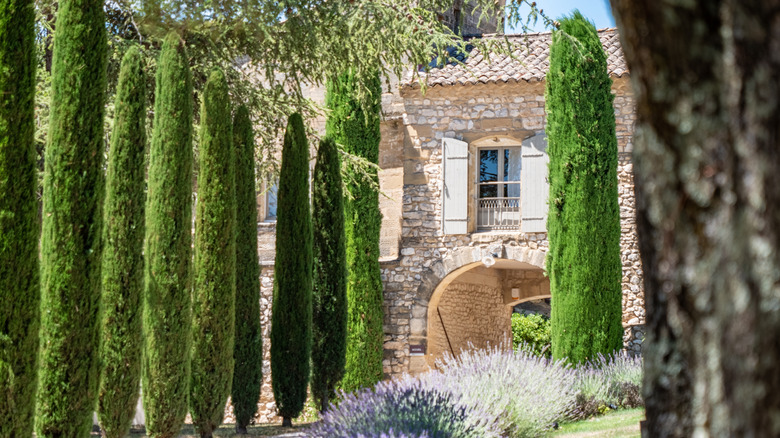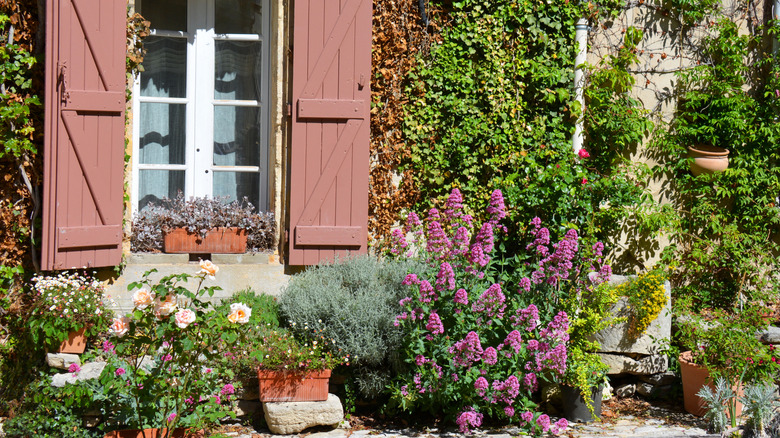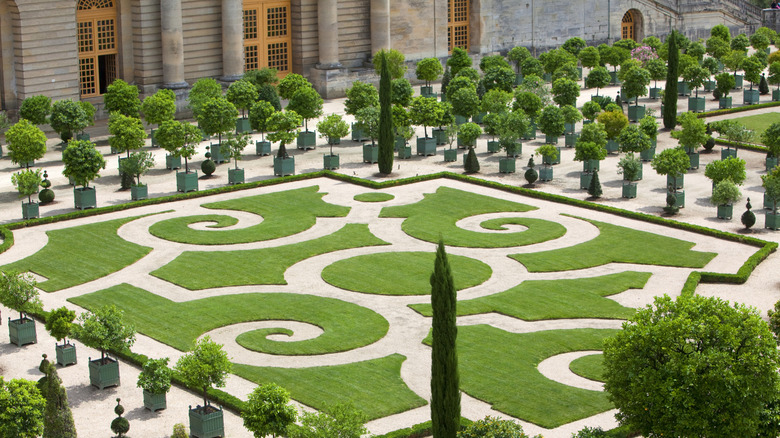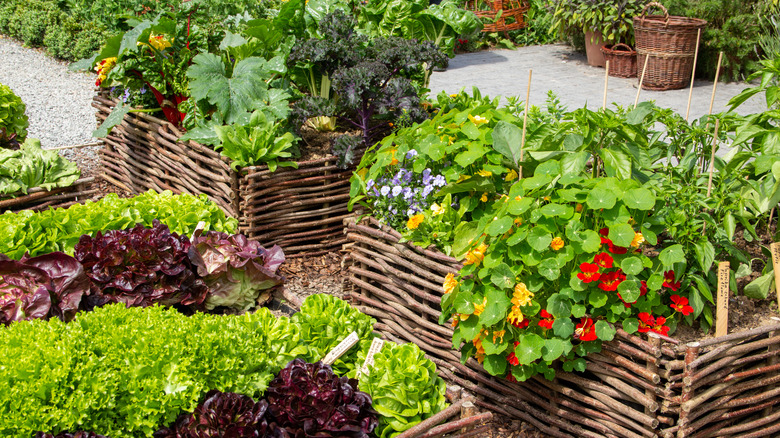What Is A French Country Landscape Design And Is It Right For Your Yard?
The idea of French country design may conjure images of rustic-chic farmhouses, but the landscape outside may be a bit more of a blur. The gardens outside of French country houses incorporate elements of highly manicured traditional French garden designs, but with more wild and unrestrained elements to create a sensory experience. While some gardens are all about visuals, French country landscapes pay as much attention to the smells and sounds of the garden to keep it interesting and engaging.
Because French country gardens embrace both traditional and rustic elements, and also incorporate the symmetry and geometry that formal French gardens are known for, they are easy to tweak for almost any style house. If you have a modern home with clean lines, you can lean more on geometric designs, but if you have a more casual and eclectic home, you can embrace other elements of this landscape style to work for you.
Unlike a Tuscan garden which is generally lower-maintenance a French country garden can take a bit of work. Focal points like topiaries and trellises often find their way into informal French gardens, adding whimsy and romance. Keeping these elements looking great takes some pruning and trimming, but has a big impact. You can find different ways to add these elements if topiaries are too much work.
Consider these plants for French country landscapes
When you picture the French countryside, you might imagine fields of French lavender (Lavandula stoechas) or sunflowers (Helianthus annuus). And, with many varieties to choose from, any gardener can find one that works in their yard, but there are other plants to consider in your French country landscape.
When designing and planting an English cottage garden, you may prepare a riot of colorful blooms, but with a French country garden you should consider symmetry and your other senses. For this reason, adding fragrant plants that also provide some structure in the landscape — such as sweet bay (Laurus nobilis) or upright herbs like lavender or rosemary (Rosemarinus officinalis) — can help you achieve the look and smell of a French country garden even if you have a small area. If space is a concern, use these tips to make your small garden look and feel bigger.
Layering plants in a simple palette will help you achieve the rustic but elegant vibe of a French country garden. Here are some other plants you may want to consider: lilac (Syringa vulgaris), hydrangeas (Hydrangea macrophylla), and boxwoods (Buxus sempervirens). Lilacs bring fragrance and height to the garden, while hydrangeas bring long-lasting blooms. Boxwoods can be clipped into nearly any shape to bring more geometry to the space. But, these gardens are about more than just plants.
Consider the hardscape
When you think of French gardens you may picture the elaborate gardens at Versailles. While French country gardens are less formal and more rustic, they do embrace the French garden tradition of symmetry — often added through elaborate paths.
So, in addition to structural, fragrant plants you will want to consider the hardscape, which is important in French gardens. Materials like decomposed granite or concrete can work, but the important part is to bring a sense of symmetry with your paths and other hardscape. Keep these tips in mind when laying out your paths: French garden design often includes a central path that leads away from the house and the paths are often lined with hedges, though planting close to the house is usually kept short.
Additionally, water is an important part of French gardens, so consider adding a water feature to your new space. Of course, adding fountains can be an expensive proposition, and small gardens may not accommodate them. Check out this list of DIY water features you can add to your yard to attract birds and add a bit of French-inspired flair.
Incorporating a potager garden into your French country landscape
What's more French than a focus on food? Nothing, so it's no surprise there is often an emphasis on food in the garden. A potager garden — or a kitchen garden — is a common element in French country landscapes. This offers a chance to include more informal plantings that combine vegetables, fruits, herbs, and flowers.
If you are embracing the symmetry and elegance of French country gardens in other areas of your yard, you will want to consider how the potager garden fits in. Herbs will likely be worked in seamlessly throughout, but consider how other plants might be used within your overall design. Can corn stalks or vining plants be used to add height? Fruit trees also make good additions to French gardens, bringing fragrance, food, and structure to the mix.
If you are new to the idea of growing food, start small. Use these tips on creating a flourishing vegetable garden in a small space to get started.



